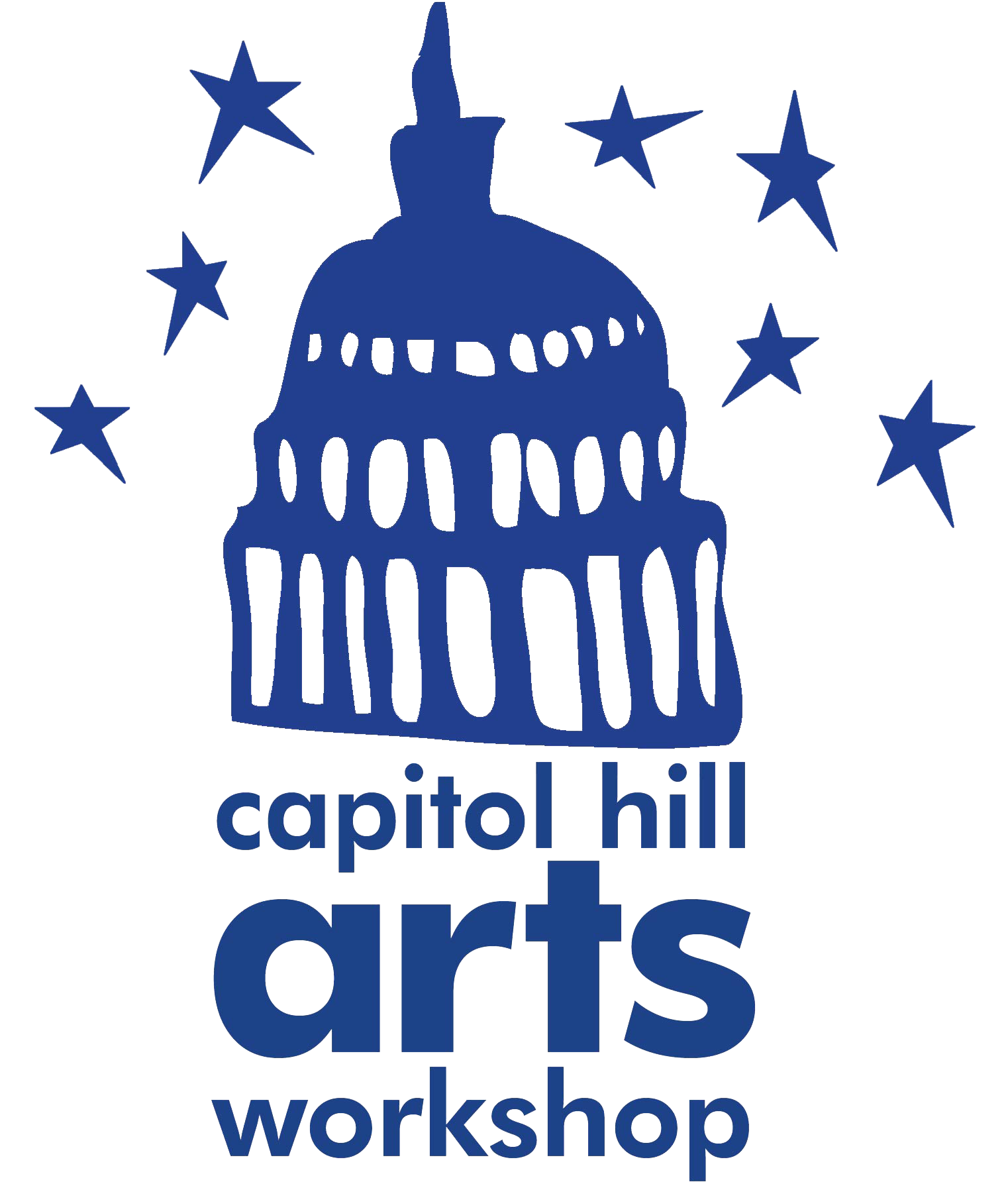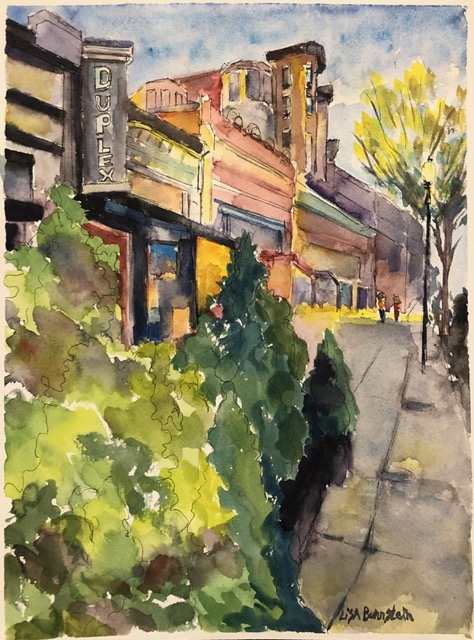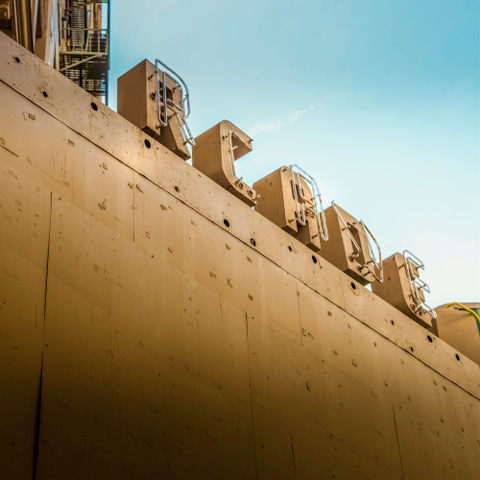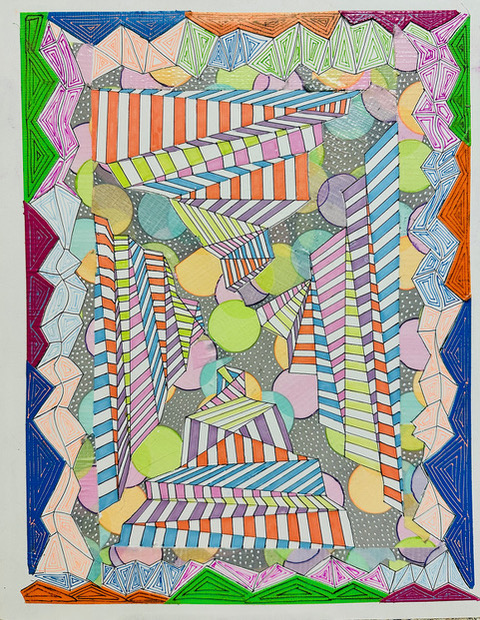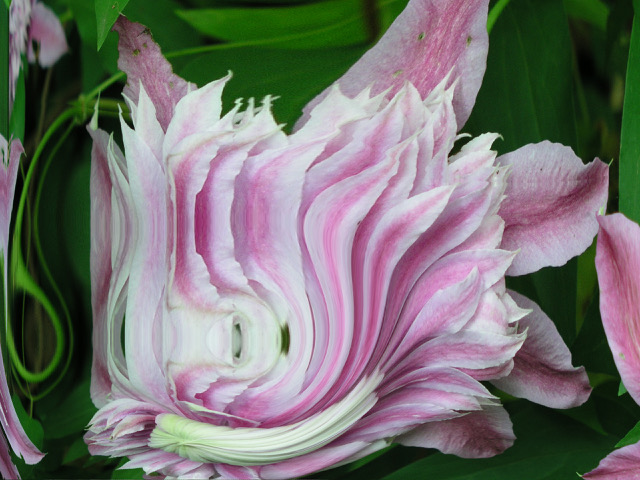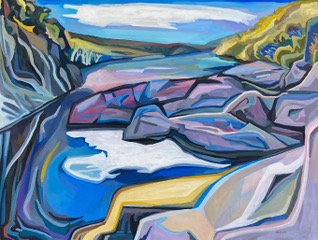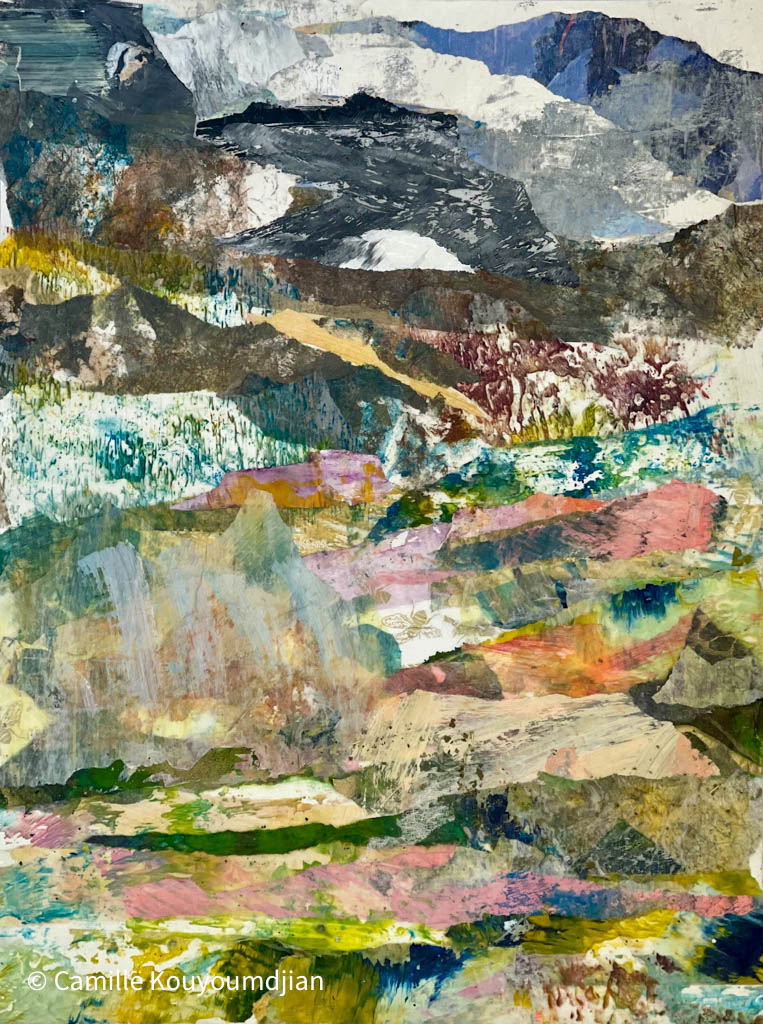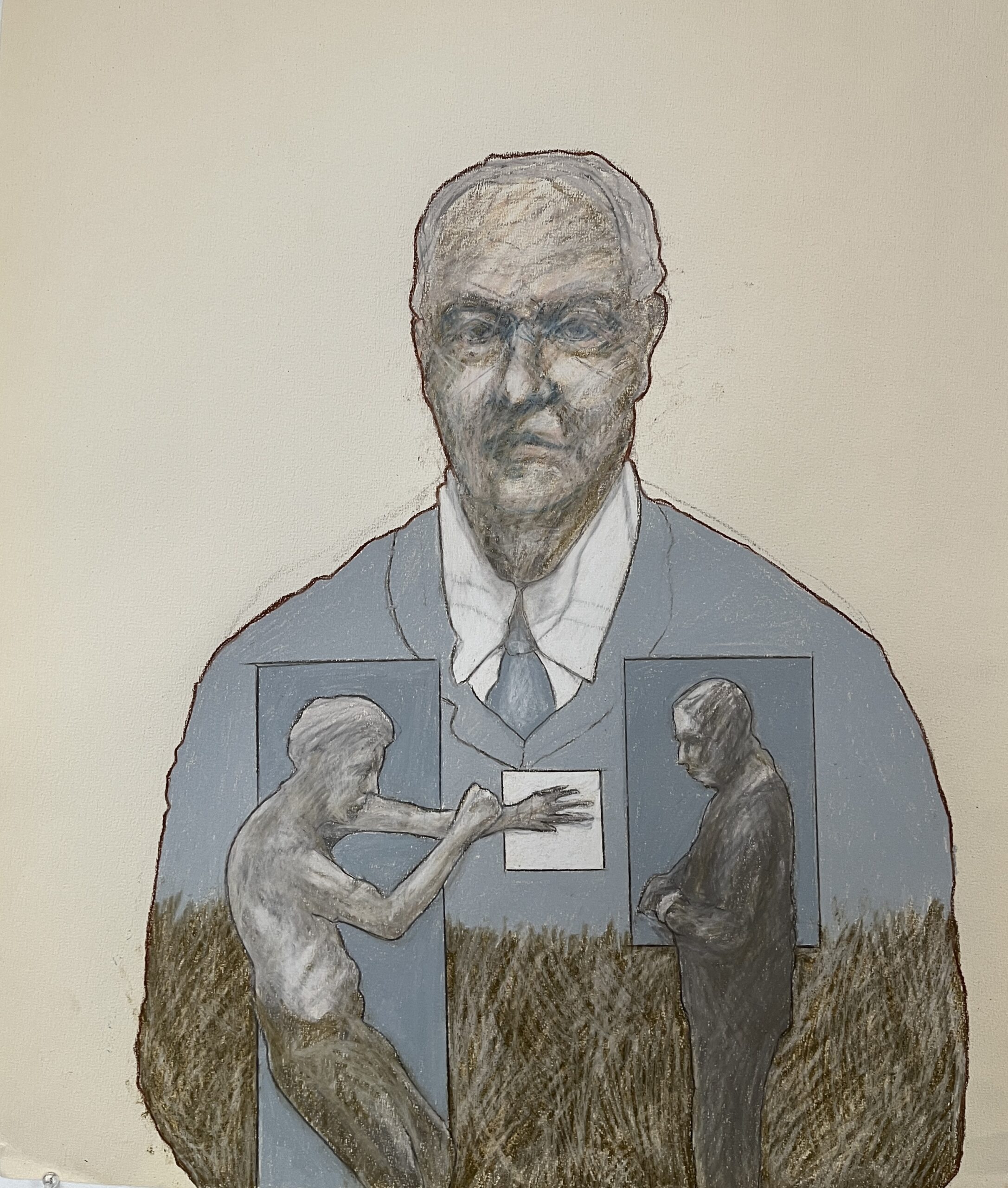I find inspiration for my painting in my surroundings, and from family and friends. In my neighborhood, on my walks to the library and the nearby Arboretum, I take photos on my phone, and I collect other people’s photos of people, pets, and places that are important to them...I strive to put what I see and feel around me into paintings to create a record of memories for myself and for others.
I continued to take photos throughout my adolescence, young adulthood, and as a parent of four kids while I graduated to more sophisticated and expensive cameras. My kids' growth was extensively documented on film.
I first decided that I wanted to be an artist when I won a drawing contest in the 5th grade. I did a color pencil drawing of a sad clown. After that I took art classes whenever I could.
Many years before I joined the Capitol Hill Art League, I started creating intricate designs using architect’s templates...My process for creating a piece is very “in the moment” which I guess is why I find it to be so meditative. I start out with a
very vague idea of what I want to do and just let the piece I’m working on evolve in the moment.
I learned that I was both arrogant and naive to think I could do in short order that which some spend their entire lives trying to achieve. I see my experiment as a great success, though. I am exhibiting my work, meeting great people, collectors like and buy my work, and I see that surviving as an artist is possible for me ...someday.
It seems odd to me that photography is widely and properly considered a legitimate art form, but digital art struggles for similar respect. I think part of the answer lies in the perception of the talent necessary to produce the image. Most of us who have taken many photographs in our time on this planet have come to deeply respect those folks who can habitually snatch remarkable photos from the ether.
A common thread in my art is the exploration of the rhythms of nature, the rhythms inside and out. To ponder the evolution of all things: the earth, with its geographical history, animals, plants, and fungi. Each opens the door of wonder.
Life's journey often takes unexpected turns, leading us to discover hidden passions and untapped potential. In my case, my path from working as a policy wonk in international development to becoming a Master Gardener and Beekeeper eventually led to my true passion: artwork. It all began with my love for the outdoors and a deep connection to nature. Exploring diverse cultures and ecosystems eventually blossomed into a career in creative activism.
Over time, what’s been most important for me has been to find my own voice. And then trust and follow it, even in the face of recurring self-doubt. I think artist voices are like fingerprints, each unique in its own way. That’s why I’m so curious about other’s work: it reveals their experience and worldview.
